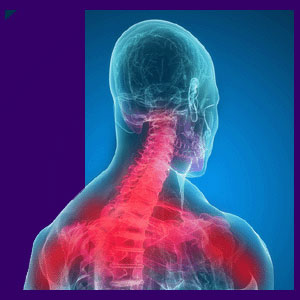
Atlas subluxation complex, also known as ASC, is the exclusive condition treated by NUCCA-certified chiropractors. In fact, resolving atlas misalignment is the only service offered by most NUCCA practitioners. ASC remains a much debated topic within the general healthcare system. Furthermore, the condition is even extremely controversial within the larger chiropractic profession. Regardless of the swarm of dissension regarding the facts of ASC, treatment for the disorder is on the rise, with more and more people seeking NUCCA services each year.
This fact-finding essay delves into upper cervical vertebral subluxation and describes atlas misalignment condition in great detail. We will examine the diagnosis and treatment of ASC, as well as some of the consequences thought to stem from upper cervical vertebral subluxation.
Atlas Subluxation Complex Explained
ASC describes a condition wherein the uppermost vertebra, called the atlas, is moved out of its proper and optimal alignment with the occipital bone above and the axis vertebra below.
Since the atlas is the origin of the spinal anatomy, subluxation here will create exaggerated misalignments in the remainder of the vertebral anatomy. To put it simply, in ASC, the first spinal vertebra is seated in a way that throws off the positioning of the rest of the spine.
Tiny subluxation of the atlas can create massive movements of the bones at the furthest end of the spine, in the lumbar, sacral and coccygeal regions. Since proper spinal alignment is considered a mainstay of chiropractic theory, this cascade effect of improper positioning is suspected of causing catastrophic effects on the health and wellness of the patient.
Additionally, ASC is cited as being the primary causation of a vast diversity of problematic health issues which are detailed below in the effects section.
How is Atlas Subluxation Complex Diagnosed?
Diagnosis of ASC is the practice specialty of NUCCA chiropractic providers. The acronym NUCCA stands for the organization that certifies these niche caregivers; The National Upper Cervical Chiropractic Association. However, many people use the term to describe the actual doctors that offer the service, as well as the service itself.
Diagnosis is a multi-layered process of evaluation that subjects the patient to a variety of standardized tests, including leg length discrepancy checks, anatomical symmetry measurements and postural assessment. However, the most important and universal component of ASC diagnosis is certainly the x-ray films that are taken from 3 distinct planes to check atlas alignment in a three dimensional model, constructed by combining all three views into one diagnostic tool.
X-rays are taken from the side, front and top of the head, in a sequence known as lateral view, nasium view and vertex view. Calculations are made to place the atlas in a three dimensional plane and determine if the vertebral bone is indeed out of proper alignment or not. If the atlas is discovered to be subluxated, the patient will be diagnosed with ASC and a plan for treatment will commence.
Atlas Subluxation Complex Effects
The main problem with suffering from a subluxated atlas vertebra is the effects which will be enacted on the brainstem. Compression and ischemia are possible results of ASC and both of these processes can have dire consequences of anyone affected by a misaligned upper cervical spine.
People seek out NUCCA chiropractors for a staggeringly wide range of possible health conditions that have been linked to ASC. While there remains little evidence in traditional medical circles that ASC even exists, the research arm of NUCCA, called NUCCRA, as well as individual certified providers, have implicated atlas subluxation in being involved in the possible causation of any or all of the following health issues: Allergies, asthma, deteriorated posture, respiratory impairments, digestive and gastrointestinal problems, internal organ failure, chronically tense muscles, MPS, FMS, hypertension, neck and back pain, limb pain, psychoemotional problems, headaches, skeletal abnormalities, cognitive disabilities, recurrent infection, uneven leg lengths, autoimmune concerns, diabetes, neurological dysfunction, homeostasis issues, depression and chronic fatigue.
It seems that new links to health disorders are always coming to light, as more NUCCA chiropractors see opportunities to increase their client base by catering to people who have yet to find effective cures for their health troubles.
Atlas Subluxation Complex Cure
Once diagnosed, the NUCCA chiropractor will carefully examine the x-rays and other diagnostic evidence in order to formulate an effective plan for treatment. They will determine how the atlas is misaligned and plot corrective manipulations that will reposition it to the ideal anatomical location.
Once the treatment plan is complete, the patient will be positioned lying on their side, and the chiropractor will use specific upper cervical spinal adjustment techniques to gently move the atlas back into proper alignment. Typically, this process will involve a string of manipulations, completed with the hands, with one or more leg length checks in between adjustments.
Once the NUCCA provider is satisfied that the atlas has been returned to a neutral alignment, they will arrange for a new set of 3 x-ray films to be taken to evaluate the effects of therapy. If the atlas is indeed aligned, then the patient is released, but may be told to follow-up for routine re-checks or other tests. However, if the alignment is still incorrect, then the chiropractor will typically begin treatment anew, until the results are deemed satisfactory.
For a complete detailed analysis of the upper cervical subluxation diagnostic and treatment processes, please read our essay covering NUCCA.





